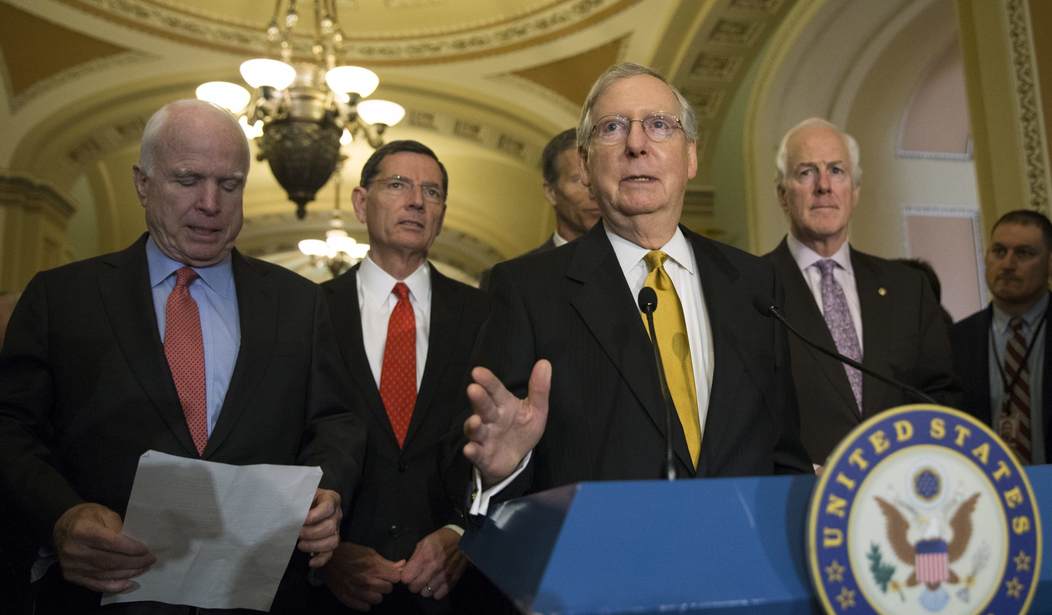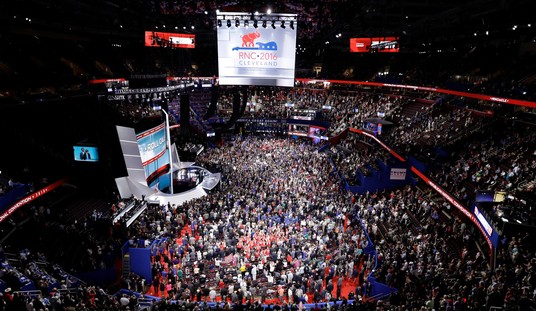WASHINGTON – While the nation’s attention naturally focuses on the back-and-forth in this year’s presidential campaign, a battle royale is being waged over which party will wind up controlling the U.S. Senate for the next two years, with majority Republicans hoping to fend off what’s emerging as a solid Democratic challenge.
Republicans hold a 54-46 advantage over their Democratic rivals in the upper chamber – two seats are actually held by independents who caucus with the Dems – but there exists some reason to believe the stars this year are aligning with the party of FDR, with a handful of GOP seats considered in very real jeopardy.
In a sense, Republicans may be wrestling with their own success. This go-round the GOP is defending 24 Senate seats to only 10 for the Democrats. That’s because in 2010, with the Affordable Care Act viewed as widely unpopular and President Obama’s approval ratings sliding, the party managed to pick up six seats in an off-year election.
Now Republicans find themselves having to defend those seats under different political circumstances. It’s a presidential election year, a time when Democrats head to the polls in greater numbers. Obama, who looked like dead man walking after his first two years in office, won re-election by 5 million votes in 2012 and his job approval is at about 52 percent according to the most recent Gallup survey, placing him in the same territory as former Republican President Ronald Reagan when he left office.
The Senate itself, which the GOP has controlled for the past two years, is historically unpopular, with only 12 percent of those polled approving of Congress, according to the Associated Press, while a whopping 88 percent disapprove. Senate Republican Leader Mitch McConnell, of Kentucky, who is not up for re-election this year but generally is viewed as the party’s face in Washington, is frequently cited as the nation’s most unpopular elected official on the federal level.
And there is the man at the top of the Republican ticket. Businessman Donald J. Trump, the party’s presidential nominee, trails Democrat Hillary Clinton by a slim margin but he remains one of, if not the, most unpopular major party candidates for the White House in the nation’s history. He may win, but there’s no evidence he has the coattails to carry anyone with him.
Regardless, it seems the GOP has a halfway decent shot at retaining the Senate majority, although the current four-seat edge likely will be reduced. Nate Silver, a highly regarded polling analyst who runs FiveThirtyEight.com, claims the electoral map favors Democrats assuming power in the upper chamber ever so slightly. Silver gives the Democrats a 59 percent chance of taking control at this stage of the race, about six weeks before the Nov. 8 election.
Silver further claims there is a 15 percent chance the election will result in a 50-50 tie, meaning the party that wins the White House will assume control with the vice president presiding.
Meanwhile, Larry Sabato, director of the Center for Politics at the University of Virginia, appears a bit less certain of Democratic success. As the situation currently stands, according to Sabato’s Crystal Ball, a web site produced by the center, Republicans lead in 19 of the 34 races on the board while Democrats have the edge in 11.
If the election ultimately plays out according to the Sabato projections, the GOP will control 49 seats, the Democrats will hold or control 47 — two of those slots are in the hands of independents, including Sen. Bernie Sanders, of Vermont, who sought the Democratic presidential nomination.
The remaining four contests, according to the analysis, are toss-ups. And there’s the rub.
First the bad news for Republicans. Sen. Ron Johnson (R-Wis.) finds himself trailing significantly in a rematch with Democrat Russ Feingold, whom he unseated six years ago, winning 52 percent to 47 percent. This year the GOP doesn’t appear optimistic – the National Republican Senatorial Committee has invested less than $1 million on Johnson’s behalf, and it shows.
Johnson, one of the upper chamber’s most conservative members, has been portrayed by Feingold as being out of step with the electorate. Even when Feingold lost in 2010, he was generally viewed positively by the voters.
And it appears Democrats are in good shape in Illinois, where Rep. Tammy Duckworth is making a strong challenge against Sen. Mark Kirk, the Republican.
Kirk finds himself in an uncomfortable place. Illinois is a Democratic stronghold – it produced a fellow named Obama – and Clinton holds about a 10-point lead, ironically, in the “Land of Lincoln.” Kirk has shifted left over the past couple years hoping to pick up moderates, and he has been one of the most vocal GOP office-holders exhibiting distaste for Trump, the standard-bearer.
Even so, Duckworth holds a lead of about 3.5 percent, according to RealClearPolitics, and GOP officials aren’t acting very hopeful.
Sen. Rob Portman (R-Ohio) was at first thought to be engaged in a tough re-election fight against former Ohio Gov. Ted Strickland. But the onetime budget director for former President George W. Bush has opened up a wide, perhaps insurmountable, lead. The RealClearPolitics polling average gives Portman a 13.5 percent edge, which is substantial at this stage.
The same could be said for Iowa, where incumbent Republican Sen. Chuck Grassley was thought to be crossways with Hawkeye State voters. Polls showed the Democrat, former lieutenant governor Patty Judge, closing in a few months ago but Grassley now holds a comfortable 10.7 percent lead, according to the RealClearPolitics polling average.
Most of the other seats currently held by Republicans are relatively safe. The party seemingly avoided a potential problem in Florida when incumbent Sen. Marco Rubio, who initially insisted he would not seek re-election coming off a disastrous presidential primary campaign, changed his mind. Rubio maintains a lead of about six points over the challenger, Rep. Patrick Murphy.
But turnabout is fair play. One of the toss-up seats is in Indiana, where Republican Sen. Dan Coats opted against seeking re-election. Regardless, it was generally considered a safe GOP slot in a conservative state, with Rep. Todd Young (R-Ind.) surviving a tough primary fight against fellow Rep. Marlin Stutzman, a Tea Party favorite.
That was until former Democratic governor and senator Evan Bayh, who decided not to seek re-election in 2010, opening the door for Coats, decided he wanted his old seat back. A moderate significantly more conservative than his father, the late former Sen. Birch Bayh, Evan Bayh remains a popular political figure in the Hoosier State and has opened up a 5.5 point lead over Young, according to the RealClearPolitics average, despite the toss-up characterization.
A Bayh victory would, obviously, give Democrats another pick-up, joining Feingold in Wisconsin. And there are other opportunities.
In New Hampshire, which has trended Democrat over the past several elections, incumbent Republican Sen. Kelly Ayotte maintains a razor-thin lead over Democratic challenger Gov. Maggie Hassan. This may be the one to watch on Election Day since Ayotte’s edge is currently only about two points and Clinton leads Trump in the state by nine points, according to a Monmouth University poll released on Sept. 20. With eight percent undecided, it could swing either way, although Ayotte has recently surged.
Another toss-up is in Nevada, where Senate Democratic Leader Harry Reid is retiring after 28 years. Vying for the slot are Republican Rep. Joe Heck and the Democrat, Catherine Cortez Masto, the state’s former attorney general.
Nevada, with a significant Latino population, has been moving more and more toward the Democrats over the past several elections – Obama won the state twice – but Heck, somewhat surprisingly, has managed to maintain a small but steady lead, reaching four points, according to RealClearPolitics.
The outcome in Nevada is significant for several reasons. It represents the only legitimate possibility of Republicans picking up a Democratic Senate seat this year. And there would be some satisfaction in taking the seat out from under Harry Reid – a despised figure in GOP circles.
And then there is Pennsylvania, where Clinton has maintained a strong lead over Trump. There, incumbent Republican Pat Toomey finds himself in a virtual tie at this late date with Democrat Katie McGinty, a former state environmental official who waged an unsuccessful bid for the Democratic gubernatorial nomination two years ago.
Pennsylvania Democrats had hoped to attract a top-tier candidate to oppose Toomey, whose approval rating is in the tank – he garners support from only 32 percent of those surveyed. McGinty finished fourth in the Keystone State gubernatorial primary, so she isn’t exactly a Bill Clinton on the hustings. Right now, according to RealClearPolitics, she holds a less than one percent advantage but Democrats are speaking confidently about a pick-up.
All that said, an Election Day upset or two is always on the table. That would likely adversely affect Republicans since they’re guarding more seats and the top of the ticket isn’t particularly strong, even though Trump stands a puncher’s chance.
One place to watch is North Carolina, where incumbent Republican Richard Burr holds a too-close-for-comfort edge over Democrat Deborah Ross, a former member of the North Carolina House of Representatives.
Outside factors could play a role in North Carolina – racial unrest over the recent shooting by police of an African-American motorist in Charlotte and the growing unpopularity of the state’s Republican governor, Pat McCrory. Some recent polls even show Ross holding a slim lead.
And Republican insiders are expressing a little concern about the Senate race in Missouri, which is a bit curious since Trump holds an estimated eight-point advantage in that conservative state.
Sen. Roy Blunt (R-Mo.) leads his Democratic challenger, Secretary of State Jason Kander, by a mere 3.4 points, according to RealClearPolitics, and the most recent poll in the race, conducted by the Emerson College Polling Society, actually shows Kander ahead by two points.
Kander is running as an outsider in what was supposed to be the year of the outsider, although most incumbents remain secure in their positions. He has taken conservative positions on several issues and is thought to be running a good campaign. Blunt, a member of the Senate Republican leadership, is anything but an outsider.








Join the conversation as a VIP Member